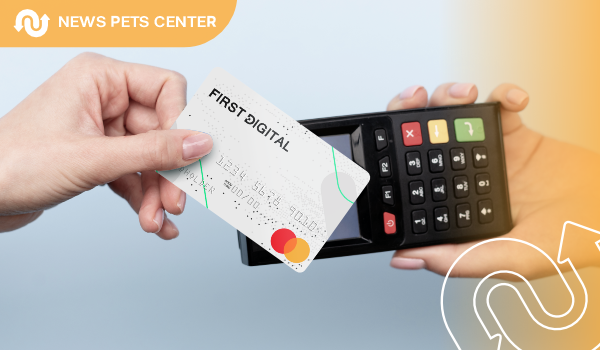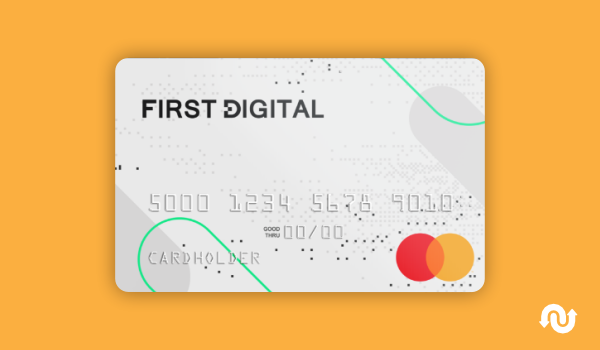
The First Digital NextGen Mastercard is an unsecured credit card issued by Synovus Bank, designed to provide access to a revolving credit line for individuals who are often excluded from the mainstream credit market. It is imperative to approach this product not as a conventional credit card, but as a high-cost, specialized tool for the explicit purpose of credit file reconstruction.
The primary function of this card is to report payment behavior to the three major credit bureaus. While this is an essential step in rebuilding credit, it is critical to understand that the card carries a substantial and complex fee structure. This review will provide a dispassionate, detailed breakdown of the card’s operational mechanics, its costs, and the disciplined strategy required to use it effectively.
Functional Benefits of the Card
- 1% Cash Back on Every Purchase: Every eligible transaction earns you 1% back, turning daily spending into consistent rewards. While you work on building or rebuilding your credit history with responsible use, this feature ensures that each purchase also provides added value.
- Access to an Unsecured Credit Line: The card’s primary advantage is that it does not require a security deposit. This provides a path to a revolving credit line for individuals who may not have the liquid funds for a secured card deposit.
- Comprehensive Credit Bureau Reporting: The account servicer, Concora Credit, reports your account activity to all three national credit bureaus: Experian, Equifax, and TransUnion. Consistent, positive reporting is the fundamental mechanism for improving a credit score.
- High Approval Likelihood for Subprime Profiles: The underwriting standards are specifically designed to accommodate applicants with low credit scores or past credit difficulties, including bankruptcies.
- Standard Mastercard Protections: The card includes Mastercard Zero Liability Protection against unauthorized transactions, providing a baseline level of security for purchases.
- Initial Credit Limit of $700: The card provides a standard starting credit limit of $700, which is sufficient for demonstrating responsible credit management.
Who Can Apply: Eligibility Criteria
This card is intended for a specific segment of the U.S. population.
- Credit Profile: Individuals with poor, fair, or limited credit histories.
- Age and Residency: You must be at least 18 years of age and a U.S. resident with a valid physical address.
- Identification: A valid Social Security Number is required.
- Financial Requirements: You must have a source of income and an active checking account.
How to Apply: The Recommended Protocol

- Submit an Application Online: Visit the official First Digital Card website to begin the secure application process. The initial application often results in a quick conditional decision.
- Receive and Review the Offer: If you are conditionally approved, you will receive a detailed cardholder agreement that outlines your specific terms. Review this document with extreme care.
- Pay the Mandatory Program Fee: To proceed, you must pay the $95 one-time Program Fee. This is a point of no return; the fee is non-refundable. If you have any reservations, do not pay this fee.
- Receive and Activate Your Card: After the fee is processed, the physical card will be mailed. Upon activation, your account is officially open, and the first year’s annual fee will be billed.
Frequently Asked Questions: An Advisor’s Perspective
- What is the most significant risk associated with this card?
The most significant risk is carrying a balance. The 35.99% APR can quickly turn a small debt into an unmanageable one. The second risk is underestimating the total cost of ownership. The combination of the upfront program fee and recurring annual and monthly fees makes this a very expensive product to hold for more than a year or two. - What will my initial available credit be upon activation?
Your initial credit limit is $700. The $75 annual fee is charged immediately. Therefore, your initial available credit will be $625. - Is there a scenario in which this card is a better choice than a secured card?
The only scenario is one of strict financial necessity: if an individual has been denied for all secured card options and absolutely cannot provide a refundable security deposit, but can afford the high, non-refundable fees of this card. For nearly all other consumers, a secured card is the more prudent financial choice. - What is the recommended usage strategy for this card?
The recommended strategy is minimal and disciplined. Use the card to pay for one small, recurring monthly charge (like a single subscription service). Set up automatic payments to pay the full statement balance from your checking account each month. Do not use it for daily spending. The objective is to use it as a credit reporting utility for 12-18 months, improve your score, and then transition to a prime, no-fee credit card.





